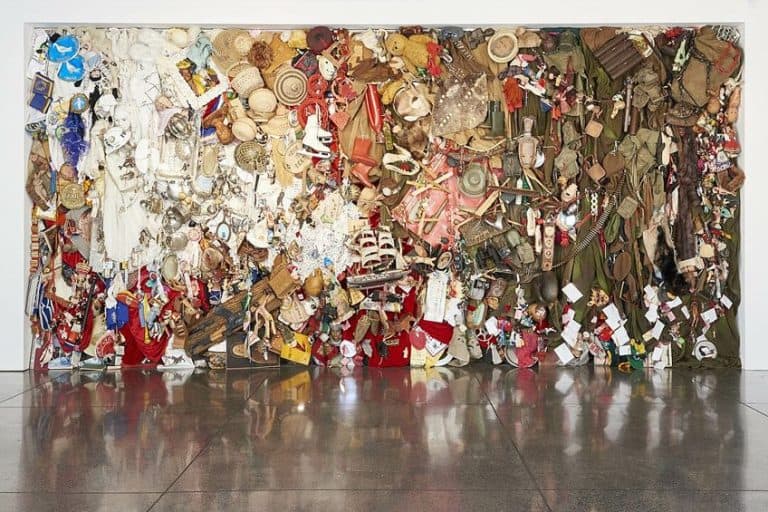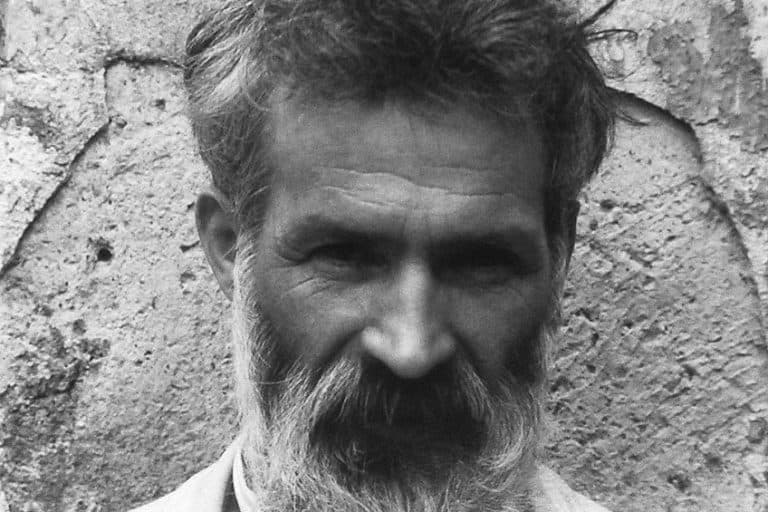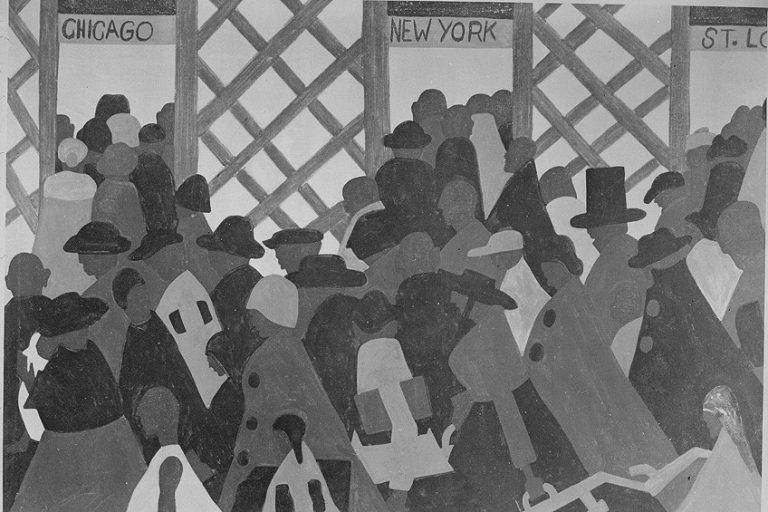Robert Smithson – A Brief Biography of the Artist Robert Smithson
Robert Smithson was an important contemporary artist who was best known for his innovative work that propelled the Land Art movement. Smithson redefined the parameters in which art previously existed, with his peculiar works and ideas inspiring other artists as the field of contemporary art grew. With a range of various interests that motivated his artworks, Smithson demonstrated his fascination with entropy and duality, and essentially created art that questioned the place of humans within the world.
Robert Smithson Biography
Robert Smithson (1938-1973) was an influential American artist and writer, best known for his groundbreaking involvement in the Land Art movement. For more than 50 years, his artworks and ideas have influenced artists and thinkers alike, building the platform upon which contemporary art is essentially based.
Focusing on spatial arts, Smithson regularly made use of drawing and photography, which added to the sculptures and land art he created. His works achieved critical acclaim and have been exhibited in galleries and museums in America such as the Smithsonian American Art Museum, the Museum of Modern Art, the Whitney Museum of American Art, and the Solomon R. Guggenheim Museum. Additionally, some of his works reached an international audience and were exhibited in London’s Tate Modern amongst others.
Born in Passaic, New Jersey, Robert Smithson resided in Rutherford until he was nine years old. He displayed great enthusiasm for art at a young age and was known as a largely self-taught artist. In 1955, he studied painting and drawing, albeit briefly, at the Art Students League of New York for a year, as well as the Brooklyn Museum Art School. Throughout these years, the Robert Smithson paintings and collages that were produced took inspiration from Abstract Expressionist artists Jackson Pollock and David Smith. In addition to these artists, Smithson became fascinated with the works of Tony Smith and Morris Louis.
After his studies, Smithson served in the United States Army Reserves from 1956 to 1957 and moved to New York once he was finished. Towards the late 1950s, he began to focus on drawings, collages, and paintings, and created artworks that would be used in his first solo show in the Artists Gallery in 1959.
His interests lay in cartography, geology, architectural ruins, prehistory, philosophy, science-fiction, language, popular culture, and travel, with a variety of these interests seen in his works.
In the early 1960s, Smithson met artists Carl Andre, Claes Oldenburg, Donald Judd, and Nancy Holt, whose combined influence drove him to investigate a considerably different art form. The friendships formed during this time of Smithson’s life would signify a major turning point in his career and would go on to greatly impact him.
Additionally, it was through these friendships that he met Nancy Holt, who would eventually become his wife. Based on the influences of his new friends, Smithson produced works that used both industrial and organic material throughout the 1960s. In-between his art practice, Smithson was a writer for Arts Magazine and Artforum, often switching between describing obscure thoughts and discussing real descriptions of various art and landscapes
Smithson displayed an inclination towards working with ruined or depleted sites in nature, as he used the earth as his palette upon which his artworks were created. Within the land, Smithson would produce circles, spirals, and mounds to create his large-scale sculptures, which he deemed Earthworks. These sculptures were directly attached to nature and were essentially made through moving and building upon large quantities of soil and rocks.
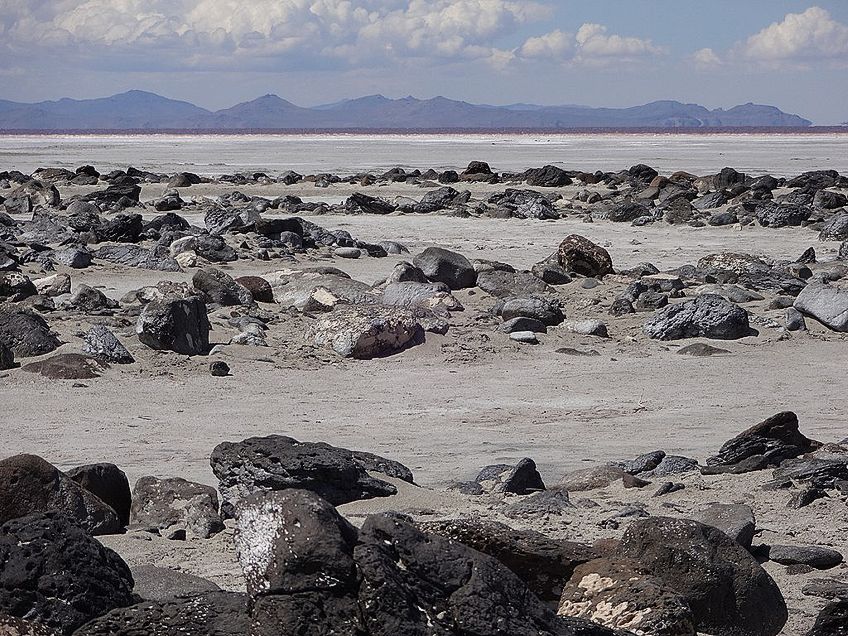
Following in the footsteps of other land artists during the 1960s and 1970s, Smithson chose to create his major works outside, as nature was viewed as a compromised gallery structure. In addition to his large outdoor Earthworks, Smithson also created a variety of smaller artworks for museums and gallery set-ups which he named “Non-sites”. These artworks were made up of topographic maps of areas that were contrasted against simplistic exhibits of materials taken from the actual sites.
In doing this, Smithson attempted to reference his true outdoor work, which he thoroughly documented through photographs and films.
As his career progressed, Smithson remarked that he found the use of unnatural materials in David Smith’s sculptures to be particularly fascinating, as they were modified by time and natural elements like rust and decay. This thought demonstrated Smithson’s captivation with natural materials, as he once remarked that the strata of Earth are like a museum containing elements that avoided the order and social structures in which art was restricted.
Of all the artwork created by Robert Smithson, land art sculptures were his most well-known works. He is best known for his iconic 1970 sculpture, titled Spiral Jetty. This artwork was motivated by the Minimalist work of contemporary art, as well as science fiction, geology, and the notion of entropy. After the great success of this land art piece, Smithson began the conceptualization of a new Earthwork project in 1973. Unfortunately, Spiral Jetty would prove to be his last completed work, as he was involved in a helicopter accident in Texas later that year whilst surveying the project site for his new artwork and passed away at the tender age of 35.
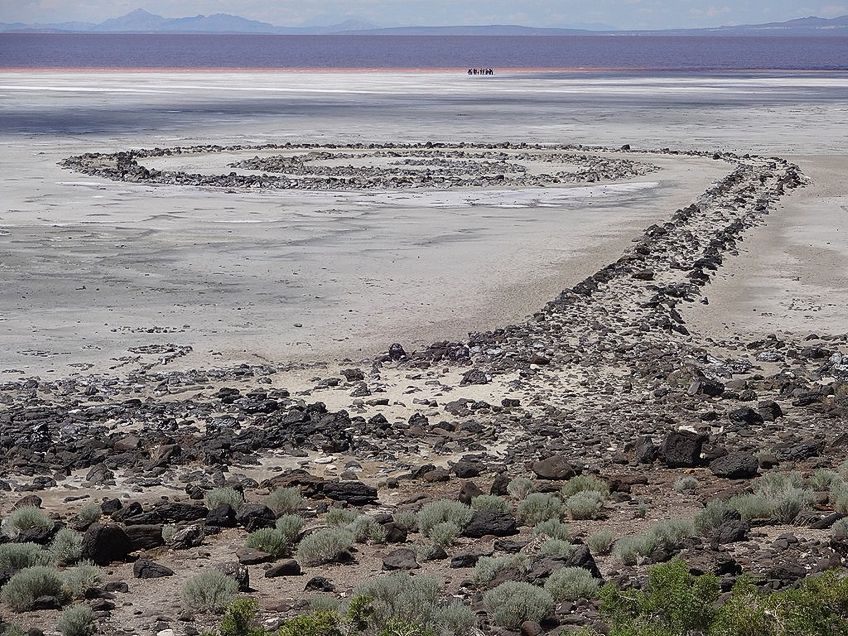
In his short yet plentiful life, Smithson managed to produce numerous artworks that took the form of paintings, drawings, sculptures, architectural schemes, photographs, films, writings, and land works. Almost 50 years after their initial conception, the ideas portrayed in Smithson’s art are still significantly important within our current time. Through working with unconventional materials such as soil, rocks, and disused industrial sites, he was able to challenge prevalent ideas about the making and consumption of art through his iconic earthworks. Thus, Smithson can be considered one of the most prevalent figures in the conceptualization and development of the Land Art movement.
Artistic Style
Before Smithson delved into the Land Art movement, his style centered around creating works that took inspiration from Abstract Expressionism. At the start of his career, he experimented with many influences before settling on sculpture and land art as his main focus.
Earlier Works
After being noticed by art dealer Virginia Dwan towards the end of the 1950s, Smithson held his first solo exhibition at the Artists’ Gallery in 1959. At this point in his career, his artworks mainly took on the form of collages and drawings, as he would only begin sculpting at a later stage. Smithson mainly identified as a painter at the beginning of his career, and he initially drew great inspiration from a variety of subjects ranging from science fiction, Catholic art, Pop art, and Abstract Expressionism.
Due to his primary interests, his works took on a predominantly multimedia approach. He made use of elements such as crayon, pencil, gouache, and photography to create very two-dimensional works.
His collage work and paintings between 1959 and 1962 explored various mythical religious representations and were seemingly based on Dante Alighieri’s poem, Divine Comedy. Due to this exploration, Smithson’s works produced from the early 1960s integrated themes from different art periods like classical art, religious imagery, science fiction movies, natural history, and even pornographic materials such as homoerotic art.
As the 1960s continued, Smithson’s work was still in keeping with his abstract and expressionist aesthetic, but artworks such as Algae (c. 1962) demonstrated his growing interest in the idea that the earth could be used as an impactful resource. Smithson’s influence shifted towards considering the idea of permanence, as he played around with using natural and artificial materials, as well as site-specific art.
In 1964, Smithson re-entered the art world after having taken a short break as a supporter of the Minimalist movement. He began producing artworks that rejected the interest he had previously taken in the body of his earlier works and started to investigate the idea of optical mirroring and refraction with glass sheets and neon lighting tubes. Smithson became associated with other artists within the Minimalist or Primary Structures movement, such as Robert Morris, Sol LeWitt, and his wife, Nancy Holt.
Later Works
After his re-emergence in 1964, Smithson took up sculpture and produced artworks that were minimalist and geometric in nature. However, it was obvious from the outset that he was not completely at ease with the idea of restricting himself and his work to the confines of a studio. During the mid-1960s, Smithson embarked on numerous trips to New Jersey and nearby states to visit quarries, industrial sites, and abandoned wastelands.
These visits began to have an impact on his art from 1966. Robert Smithson sculptures titled Plunge (1966), Terminal (1966), and Alogon #2 (1966), all made from painted steel, made use of the geometric forms, industrial materials, and limited palettes that were synonymous with the movement. These sculptures were built inside and intended for an indoor display, which gave way to his idea of creating sculptures that he termed Sites/Non-sites, which explored sites made in both nature and gallery spaces.
From 1967 until the late 1960s, Smithson focused heavily on these two forms of sculptures as he explored the idea of human intervention within organic landscapes. He made use of mirrors and natural materials such as sand, dirt, and rocks to create his peculiar three-dimensional sculptures and photographed the newly altered environments. These were known as his Sites works, and the results impacted the beauty of the essentially unaffected landscapes, as unease was created by Smithson adding such blatantly artificial objects into the setting.
Smithson’s Non-Sites works referred to the exhibitions he put on in gallery and museum spaces where he gathered and displayed materials that had been removed from their natural geological environment. These Non-Sites were also displayed through the photographs and maps he constructed, which documented the origin of the materials on show.
Smithson’s subsequent earthworks took inspiration from his Sites-Non-sites practices but were explored on a much larger scale. Within these land art sculptures, Smithson physically worked to reconstruct the land. His best-known work that emerged from his later years as an artist remains Spiral Jetty (1970).
Robert Smithson Land Art: Most Famous Art Pieces
Throughout his prolific career that ended so abruptly, Robert Smithson has been associated with land art, sculptures, paintings, as well as writing. Within each category, Smithson demonstrated his growing fascination with entropy and the natural environment, with this fascination culminating in some of the most well-known art pieces to ever be associated with the Land Art movement. Of all the artwork Robert Smithson is known for, it is his land art sculptures that remain his most iconic. His three most significant works are listed below and are still somewhat in existence today.
Spiral Jetty
Existing as the most iconic earthwork, and possibly the most well-known Robert Smithson sculpture and land art to exist is Spiral Jetty, created in 1970. After much research, Smithson purchased a 20-year lease on 10 acres of lakefront land on the northern shore of the Great Salt Lake in Utah to use as the base for his work. Along with hired contractors, Smithson began work on building a huge counterclockwise spiral that was 15 feet wide (4.6 meters) and extended 1500 feet (460 meters) out into the lake. The spiral consisted of about 6650 tons of local basalt rocks and mud and formed a jetty that jutted out from the shore of the lake.
Despite the formation existing as an unnatural expansion of a natural landscape, what makes Spiral Jetty so unique is that it was one of Smithson’s first earthworks that kept a balance with the natural environment. During its conception, Smithson visited various prehistoric sites, including Stonehenge in England, to ensure that he was accurately demonstrating geologic time through the scale and materials in his earthwork. To this day, Spiral Jetty can be seen from time to time, depending on the water level.
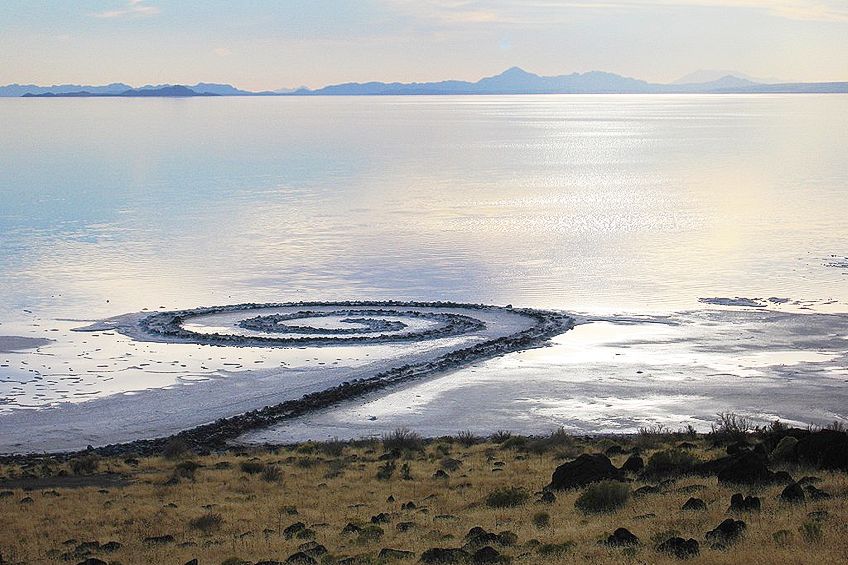
Partially Buried Woodshed
In 1970, Smithson also created the earthwork Partially Buried Woodshed at Kent State University in Ohio. This work was constructed to demonstrate the theory of entropy, as a run-down woodshed was placed on the university campus and covered with mounds of earth until the weight broke the central beam. In 2018, it was recorded that only a small mound of dirt and the woodshed’s concrete foundation remained, which marked the site of the earthwork.
Today, the only reminder of this land art is an educational plaque situated behind the Liquid Crystal Institute building on the university’s main campus. After the creation of Partially Buried Woodshed, Smithson initiated other projects that were in line with his artistic ideology surrounding entropy.
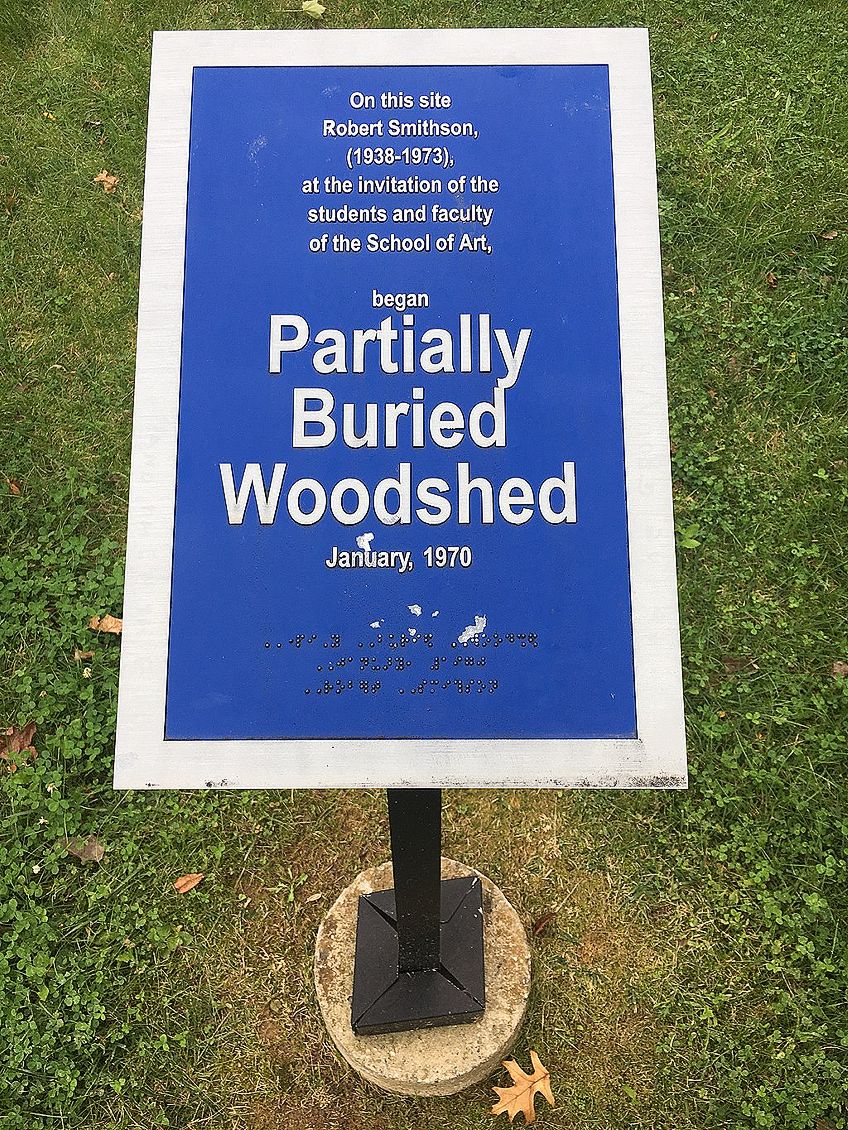
Broken Circle/Spiral Hill
Building on the themes he created in his previous works, Smithson created Broken Circle/Spiral Hill in 1971. This was made to be exhibited at that year’s Sonsbeek art festival in Emmen, the Netherlands. The theme of the festival was “Beyond Lawn and Order”, with this earthwork being built in a quarry lake that was 10 to 15 feet deep. The Broken Circle was built from white and yellow sand and was 140 feet in diameter with a 12-foot-wide canal. The Spiral Hill base, with a diameter of 75 meters, was made out of earth, white sand, and black topsoil.
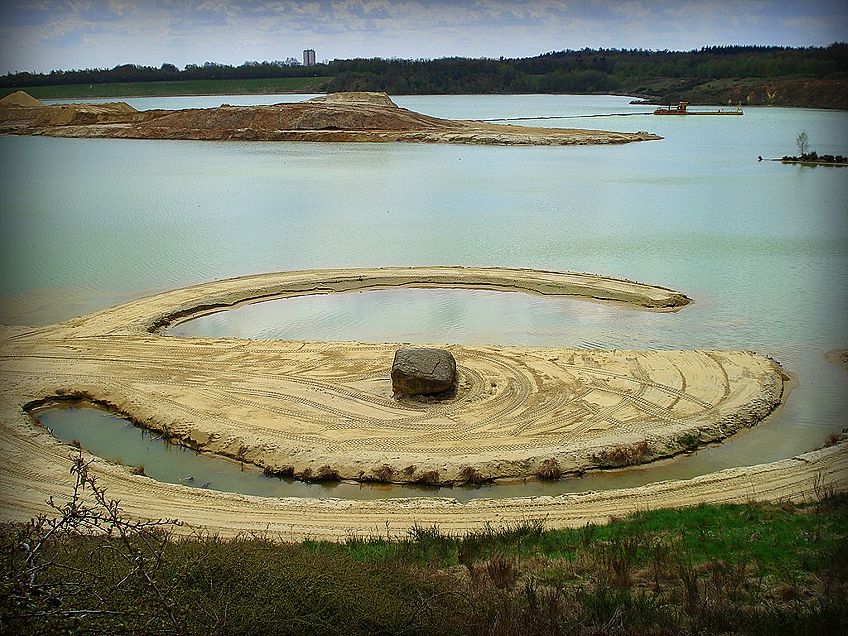
Talents Beyond Art: Writing
Between 1967 and 1970, Smithson wrote for the publications Arts Magazine and Artforum in addition to producing his artworks. He was regarded as a skilled essayist, critic, and theoretician, and attempted to apply a mathematical detachment to the art that he spoke about. His writings centered around fascinating theories that he developed himself, such as the convergence of earth, language, and art.
In September of 1968, Artforum published a piece titled “A Sedimentation of the Mind: Earth Projects”, in which Smithson demonstrated the theme of time that existed as a constant in both his artworks and writing. Throughout his career, Smithson displayed a growing captivation with the idea of time and humankind’s recurrent efforts to regulate it. Smithson believed that these tries were a foolish attempt at trying to control something as incalculable as time and that through doing so mankind was removing the right of the earth to exist.
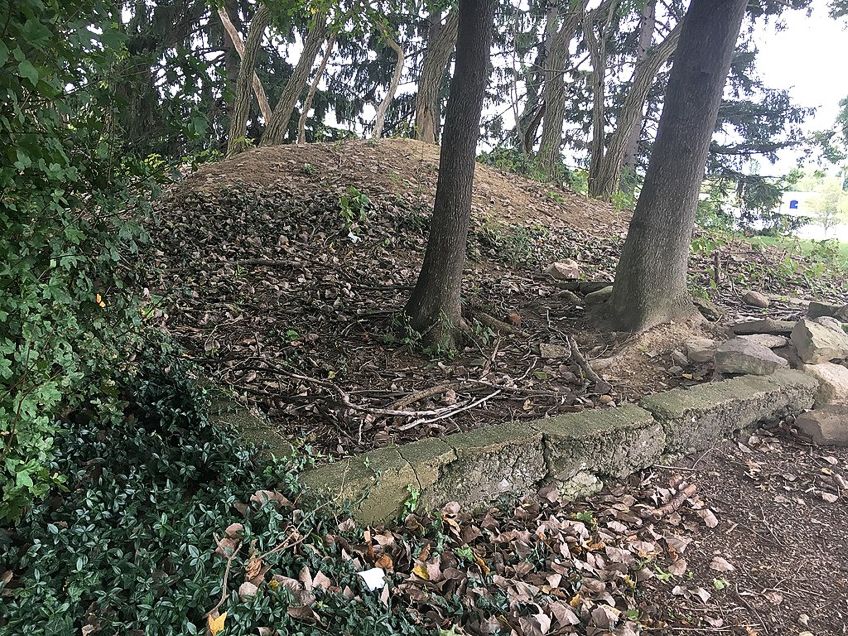
He presented this theme again in his 1970 Partially Buried Woodshed earthwork in Ohio, as the concept was to demonstrate the effects of geologic time and its inevitable absorption of all man-made efforts. Interestingly enough, Smithson Spiral Jetty would eventually temporarily succumb to the surrounding lake, despite the concept of time not featuring as one of the major influences in the earthwork.
Smithson was a highly romantic artist whose grand and spiritual thoughts featured in the majority of his writing. These thoughts were all gathered for the 1996 novel edited by Jack Flam, titled Robert Smithson: The Collected Writings, which exists as a record of his skilled writing ability.
Gallery Exhibitions
The majority of Smithson’s work was created to be viewed outside the confines of a studio or gallery. While certain works were made for exhibitions, such as Broken Circle/Spiral Hill, the majority of his exhibitions have taken place after his death and were put on by the Holt/Smithson Foundation.
Hypothetical Lands
His most recent exhibition, titled Hypothetical Lands, ran from December 2nd, 2020 to January 9th, 2021 at the Marian Goodman Gallery in London. Unfortunately, due to the Coronavirus pandemic, the gallery was closed to the public because of the Tier 4 lockdown.
Hypothetical Lands focused on Smithson’s persistent interest in islands. He viewed islands as abstract sites that demonstrated the persistently changing surface of our world as well as the limits of mankind’s intellect. Within these islands, some sites were used as locations for creating sculptures, while others were investigative sites that looked at the structure of landscapes through the formation of earthworks.
The selection of works on display includes mobile and spiral islands, forking jetties, concrete seas, and rising volcanoes. The exhibition presented over fifty years of his work, spanning between 1961 and 1973, and was the first time that many of the works were exhibited in years.
Hypothetical Islands was partnered with a simultaneous exhibition that took place at the Galerie Marian Goodman gallery in Paris and was titled Primordial Beginnings. This accompanying exhibition investigated Smithson’s exploration of origins and archetypal nature. In addition to Smithson’s work, both exhibitions featured rarely seen works belonging to his wife, Nancy Holt.
Unrealized Works
Throughout his lifetime, Smithson developed various proposals for projects that never came to fruition, due to either their impractical nature, their absurdity, or the lack of support given to the projects. An example of one of these unrealistic projects was his 1970 series of drawings that he created for a work titled Floating Island: To Travel around Manhattan Island. Smithson envisioned a vessel that was to be pulled around Manhattan by a tugboat, which was filled with cracked concrete and glass. Additionally, other variations of this project included filling the vessel with earth and covering it with trees and vegetation.
Death and Legacy
Sadly, on July 20th, 1973, Smithson was on board a helicopter that was flying over a ranch near Amarillo, Texas, when the pilot was unable to maintain airspeed and crashed. Both Smithson and the pilot, as well as a photographer that was accompanying them, died in the accident. At the time of his death, Smithson was surveying the site for his latest project, titled Amarillo Ramp.
The work was posthumously completed by Smithson’s wife Nancy Holt, along with other artists. Amarillo Ramp was initially built to rise from a synthetic shallow lake, but the lake eventually dried up which left the earthwork to erode and become overgrown. After his death, many contemporary artists drew inspiration from Smithson’s work and created various homages to the artworks he created throughout his career.
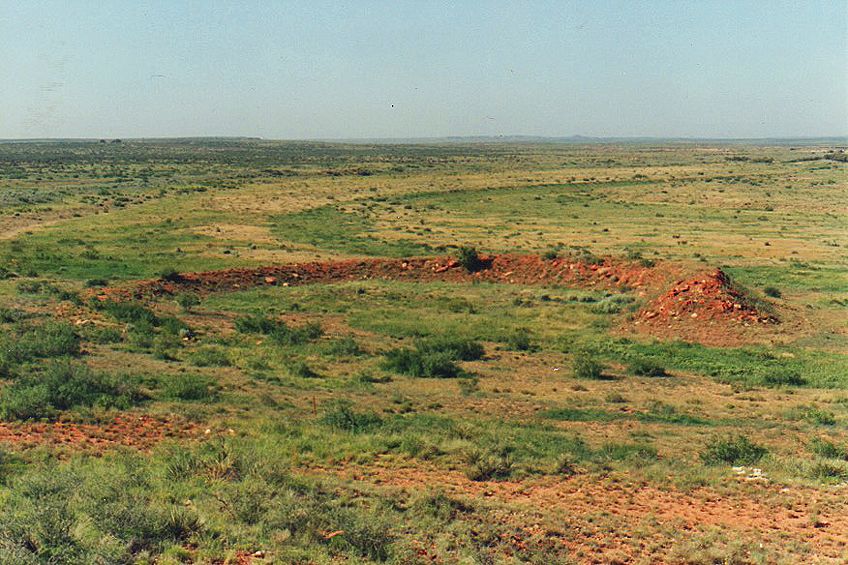
In 2017, the Holt/Smithson Foundation was established to protect, through public service, the probing spirit of the two artists who created inventive methods of examining humankind’s relationship with the earth, and who broadened the confines of artistic practice. At its core, the purpose of the foundation is to grow the awareness of both Holt and Smithson’s legacies.
Not only did he invent the term “Land Art”, Robert Smithson essentially gave birth to the entire movement. His death was thought to have sped up the Land Art movement, as his work encouraged fresh generations of artists to abandon the studio and create art out in nature. After reading through the above Robert Smithson biography and learning about the works that he created, it is easy to see how he was a pivotal leader in the Land Art movement.
Despite having started by creating paintings and collages, Robert Smithson paintings were extremely rare to see, as he focused all his creative energy on creating earthworks that encompassed a variety of ideas. Smithson intended for his works to be depleted by time and nature, and thus they all have a limited life span. Whilst the majority of artists hope to create work that outlasts their lifetime, Smithson’s different values of art are what have enabled his legacy to live on years after his death.
Isabella studied at the University of Cape Town in South Africa and graduated with a Bachelor of Arts majoring in English Literature & Language and Psychology. Throughout her undergraduate years, she took Art History as an additional subject and absolutely loved it. Building on from her art history knowledge that began in high school, art has always been a particular area of fascination for her. From learning about artworks previously unknown to her, or sharpening her existing understanding of specific works, the ability to continue learning within this interesting sphere excites her greatly.
Her focal points of interest in art history encompass profiling specific artists and art movements, as it is these areas where she is able to really dig deep into the rich narrative of the art world. Additionally, she particularly enjoys exploring the different artistic styles of the 20th century, as well as the important impact that female artists have had on the development of art history.
Learn more about Isabella Meyer and the Art in Context Team.
Cite this Article
Isabella, Meyer, “Robert Smithson – A Brief Biography of the Artist Robert Smithson.” Art in Context. March 4, 2021. URL: https://artincontext.org/robert-smithson/
Meyer, I. (2021, 4 March). Robert Smithson – A Brief Biography of the Artist Robert Smithson. Art in Context. https://artincontext.org/robert-smithson/
Meyer, Isabella. “Robert Smithson – A Brief Biography of the Artist Robert Smithson.” Art in Context, March 4, 2021. https://artincontext.org/robert-smithson/.




